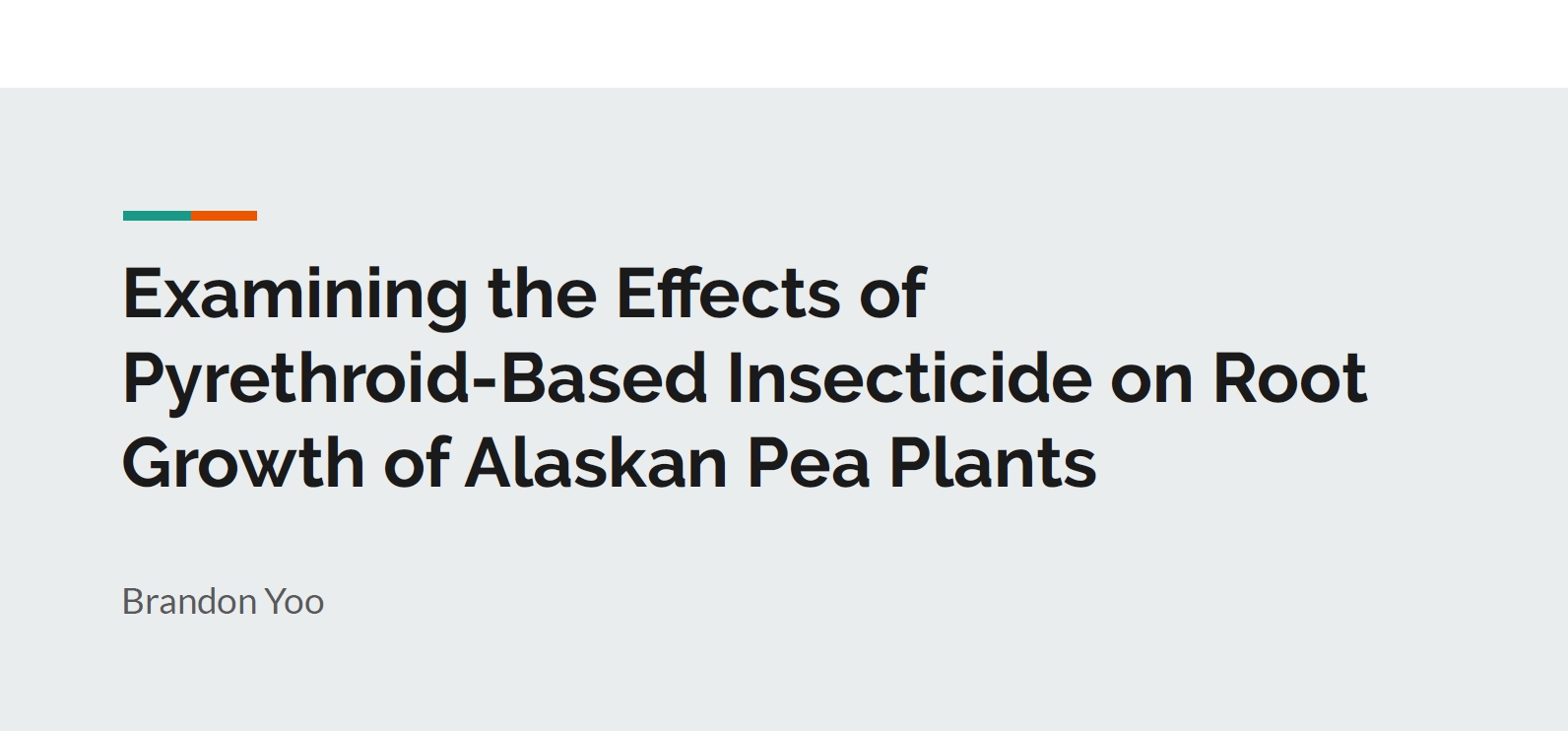Examining the Effects of Rhizobium on the Flowering Time of Alfalfa
Abstract:
The main chemical ingredient in the insecticide used was lambda-cyhalothrin, which belongs to a group of chemicals known as pyrethroids. Substances belonging to this chemical group are man-made chemicals that function similarly to natural insecticides known as pyrethrins. Pyrethroids function by disrupting the normal functioning of the insect’s nervous system. Through such disruption, these chemicals may induce paralysis or even death, making them highly effective insecticides. Some other factors affecting the potency of these chemicals include exposure time, concentration, and temperature. When an organism is exposed to pyrethroids over a prolonged period, their risk of suffering from paralysis or death increases greatly. Similarly, organisms are at the greatest risk in higher concentrations of the chemicals. Lastly, temperature has been shown to have an influence on both the effects of paralysis and toxicity of lambda-cyhalothrin (include in text citations).
Pyrethroids are generally nonpolar compounds, primarily because they are often mixed with oil-based compounds prior to practical usage. Consequently, these chemicals are not taken up into the roots of the plants on which they are sprayed. Although the plant does not necessarily uptake the chemicals directly into their roots, the chemicals are still present around the roots, thus they were believed to have had some bearing on the root growth of the plants.
In this lab, varying levels of insecticide were tested to determine the effect of the chemical on the root growth of rhizobium-inoculated and normal Alaskan Pea seeds. More specifically, the different seeds were grown in paper-towel mediums at varying concentrations of the insecticide (0.0%, 2.5%, and 5.0%). This lab holds much value and may be used in the future to assist planters in better understanding the effects of insecticide chemicals on their plants. In order to test the hypothesis that root growth of both seeds would be increasingly inhibited when grown in greater concentrations of the chemicals, the inoculated and normal Alaskan Pea seeds were germinated in plastic bags under different concentrations of the insecticide.
The experiment yielded unusual results, which largely failed to support the hypothesis. Root growth occurred in all bags, and not one seed had not sprouted. However, the most root growth occurred in the bags containing the non-inoculated seeds grown in no insecticide and the inoculated seeds grown in 5.0% insecticide. This root growth pattern was unusual because there was no pattern the growth followed across all bags. Rather, the growth seemed arbitrary and inconsistent, appearing independent of insecticide concentration. Upon second glance, the results were interpreted to nod toward a correlation between increasing concentrations of the pesticide to greater root growth of the rhizobium inoculated-seeds and an inverse relationship between the aforementioned variables for the non-inoculated seeds.
Bibliography/Citations:
No additional citationsAdditional Project Information
Research Plan:
First, the insecticide solutions, at varying concentrations, were prepared. The 0.0% solution contained only 200mL of deionized water. The 2.5% solution was prepared by mixing 5mL of the insecticide and 195mL of deionized water. Lastly, the 5.0% solution was prepared by mixing 10mL of the insecticide with 190mL of deionized water.
Next, the seeds were prepared. The rhizobium-inoculated seeds were the only seeds that needed preparation. To inoculate them, the seeds were submerged in a rhizobium solution, prepared by mixing 3.5g of rhizobium to 100mL of deionized water, as per the instructions that came with the mix. After being submerged for two minutes, the seeds were removed and left to dry on a paper towel.
Then, the mediums were prepared. To prepare the mediums, two paper towels were placed on top of one another and submerged in the different solutions. Two of mediums were created with each of the solutions to make growing mediums for the non-inoculated and inoculated seeds.
Finally, five of each type of seed were placed in each of the growing mediums. The moistened mediums were folded over themselves, effectively enclosing the seeds, and placed in separate plastic bags. Before the bags were sealed, they were inflated with human breath to ensure the seeds received a source of carbon dioxide.

